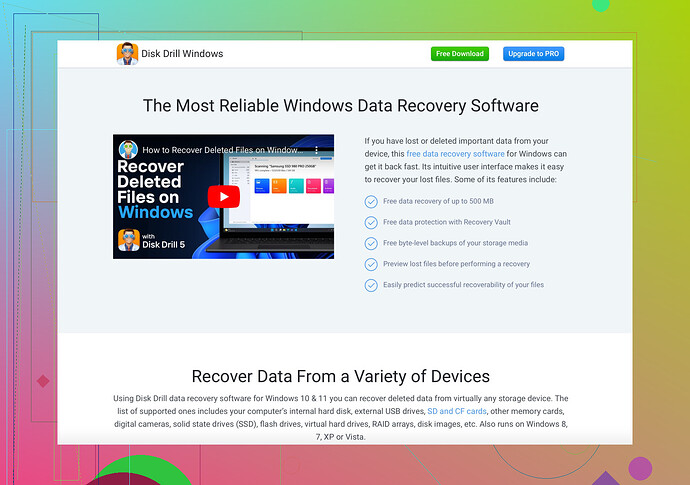My Western Digital external hard drive stopped working suddenly and I can’t access my files. I’ve tried connecting it to different computers and using different cables, but nothing seems to work. I have important documents and photos that I need to recover urgently. Any advice or recommended software/tools for data recovery? Thanks!
Ugh, I’m sorry to hear about your Western Digital external hard drive troubles. It’s crazy how these things just decide to stop working at the worst possible times. I’ve been there, and it’s maddening. Before you despair too much, there are a few steps you can try:
-
Check Disk Management: Sometimes the drive is recognized by the system, but it’s not showing up in File Explorer. Right-click on ‘This PC’ > ‘Manage’ > ‘Disk Management’. See if your drive shows up there. If it does, but it’s not assigned a letter, assign one manually.
-
Try a Different OS: Plugging the drive into a Mac or a Linux system might sometimes magically make it readable again. Strange but true.
-
Drivers & USB Ports: Ensure your USB drivers are up to date. Also, try different USB ports (especially if you’re using a desktop PC with ports both in front and back).
-
Listen for Odd Sounds: Place the drive close to your ear and listen for any strange noises (like clicking or beeping). These could indicate physical damage.
If none of these work, it’s time to look into dedicated data recovery options. I’ve had good success with Disk Drill Data Recovery Software. It’s quite user-friendly and effective at restoring lost data. It supports several file systems and types, so your documents, photos, or whatever else should be retrievable. Definitely worth a shot before moving on to more costly professional services.
Hope some of this helps!
Ugh, dealing with hard drives can be the actual worst. @reveurdenuit covered a lot the bases, but let me add some extra insights to the mix.
First, power cycles. Sometimes these drives get a little moody and a full power cycle does the trick. Unplug the drive, wait a few minutes, and then plug it back in.
Second, check if the LED light on the drive is on. If it’s not, it might indicate a power issue rather than data corruption. Try using a different USB power cable if it’s detachable.
Third, boot into Safe Mode. It might sound odd, but sometimes other software interferes with the drive. Accessing it in Safe Mode with Networking can sometimes bypass these issues.
If you suspect physical damage (clicks, beeps, or no sound at all), it’s often due to the drive heads being stuck. This isn’t something to DIY unless you’re comfortable with potentially losing data. In such cases, outsourcing to a professional data recovery service might be your safest bet, despite being costly.
For data recovery software, @reveurdenuit mentioned Disk Drill. It’s definitely a solid choice. Another often recommended option is Recuva. Both tools have a decent track record in file recovery, even from drives that seem dead.
Whatever you decide, just make sure to avoid doing anything too invasive that could worsen the situation. Also, once (if) you recover your files, consider investing in regular cloud backups. Oh, the irony!
Lastly, here’s where you can find Disk Drill: Disk Drill Data Recovery Software. It’s particularly effective for recovering lost files, easy to use, and supports multiple file systems.
Hang in there!
You might want to consider opening up the drive and checking if it can be connected via a different interface. Sometimes the casing or controller inside the external drive fails, but the hard drive itself is still intact. If you’re feeling adventurous and are willing to void the warranty, you can remove the hard drive and connect it directly to a SATA port on your PC.
Keep Data Recovery in Mind: If things look grim, Disk Drill is robust and user-friendly. It supports multiple file types and has a trial version, so you can see if it detects your files before paying for it. Pros: easy to use, versatile. Cons: full version isn’t free.
Also, competitors like Recuva and EaseUS Data Recovery Wizard offer similar functionalities, but some users prefer Disk Drill for its intuitive interface.
Remember, if the drive is making odd noises, professional data recovery services might be needed. They can be expensive, but could be worth it if your data is irreplaceable. If the issue is hardware-related, they have the tools to recover data that software can’t.
And yes, after this ordeal, consider setting up a regular backup system—cloud storage can be a lifesaver.
